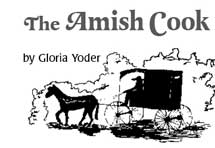
When the frost is on the punkin and the fodder’s in the shock,
And you hear the kyouck and gobble of the struttin’ turkey-cock,
And the clackin’ of the guineys, and the cluckin’ of the hens,
And the rooster’s hallylooyer as he tiptoes on the fence;
O, it’s then’s the times a feller is a-feelin’ at his best,
With the risin’ sun to greet him from a night of peaceful rest,
As he leaves the house, bareheaded, and goes out to feed the stock,
When the frost is on the punkin and the fodder’s in the shock.
— James Whitcomb Riley

This poem is, of course, the work of Mr. Riley, the man called the Hoosier Poet. The poem, which has its first line as its title, was written in the late 1800s. Though our current population is decidedly less rural, the words still evoke that sense of wonder brought by the fall of the year. The color. The crisp air. The angled light. The wonder that is nature. One of the most celebrated poets of his time, Riley shared his gift of poems in Hoosier dialect with the world. Much has been written about his work and his life. I will not attempt to repeat that here. It is enough to say that many still enjoy Riley’s poems and the delightful sense of time and history that accompany their reading.
I would encourage anyone so inclined to read the poem, all four verses. Then, I would encourage trying to find places that allow one to experience “a pictur’ no painter has the colorin’ to mock” (verse 2). The obvious places might include the Rivergreenway, Ouabache State Park, or your own back yard. If you want to go crazy, you can make your way to Adams County where many Amish farmers’ fields of drying corn are populated with yellowed corn stalks and husks (fodder) bound near the top to form an inverted standing “V” (shock).
As the green of chlorophyl drains from the remaining leaves this fall, where else locally might one find a place of quiet repose and wonder? I have some places in mind where I have recently trod. First would be the Native Habitat Waterway that consists of 150 acres of river bottom land running along the north side of the Wabash River from approximately Stogdill Road to the White Bridge. It is important to note that a river system is much more than the river itself. A natural river system includes the spillway that expands the capacity of the river during times of flooding. These wetlands slow the rush of water as rain falls and act as a sieve, so to speak, to slow the uptake of surface water. As we clear the native timber, pave, and build, and farm this natural system, we unintentionally exacerbate the problem of flooding. The Native Habitat Waterway was established between 1996 and 2009 in response to fines threatened and imposed by the EPA on the city of Bluffton for not controlling the surges of surf ce and sewage water that cause flooding and pollution during times of high water.
During this 13-year time span, the farmland was purchased and seeded with native grasses. Subsequently, and by plan, more than 53,000 seedlings of native species trees were planted at the rate of 440 per acre. The importance of this project, which cannot be overstated, is to renew this area to its natural state of a hardwood forest. This project offers a living laboratory of ecological succession. Ecological succession refers to the natural changes in species and habitat over time toward a “climax community,” or in our case here, a hardwood forest. That forest last existed here around 1850 when settlers began to clear the land of its native trees.
The good news is that anyone can view this natural succession by walking the many footpaths that wind through the acreage. There are access points just north of the White Bridge and on Elm Grove Road. It is entirely walkable.
When will the climax community of mature forest be achieved? Certainly not in my lifetime, nor my children’s, nor in my grandchildren’s. However, the process of change will move at its own pace. The planting of the grasses and tree seedlings is an attempt to jumpstart the succession process and slow the flow of flood waters into the Wabash River. It happens one day at a time for centuries. Nature is a tough and determined mother. The best news is that it is working.
The footpaths range from those sunlit, where thick grasses grow, to a mossy, moist flooring shaded by the low canopy of the many trees. Yesterday’s colorful leaves now rest sticky and wet on the floor where insects and microorganisms do their reductive part to release nutrients back to the underlying soil. Year to year, as the canopy of the trees thickens and rises, the character of the forest floor slowly changes. These changes in turn determine what flora will be favored to grow beneath the trees. A great example of succession is to be found by walking the path from the White Bridge to the Ouabache State Park entrance. Many will remember 30 years ago when the path was sun splattered and meandered through wide open spaces. Today the walk is far different.
Someday when you walk the Rivergreenway, at the red footbridge, cross River Road and walk to the south along Bill’s Creek. Here you will find 40 acres of spillway owned and maintained by Doug Sundling. You may also find a pile of firewood for sale by the honor system. Surprisingly, one can walk this acreage nearly all the way to Ind. 116 along many choices of walking paths. Doug says that while he doesn’t advertise this as a public space, he does not discourage exploration. You may walk through the woods to your heart’s content. It’s calmingly quiet. There’s no traffic.
Doug also says that he will be the last individual owner of this land, as he eventually plans to place it in a land trust for the sake of perpetuity. Here it now serves and will continue to serve as a natural spillway in the river system. Former Mayor Ted Ellis says that Doug, as a consultant for the city, was also the engine behind the development of the Native Habitat Waterway in addition to the creation of Pickett’s Run Park, in both idea and labor. Tell Doug thanks when you have the chance.
Here’s The Thing: Thank you to both Ted Ellis and Doug Sundling for sharing the details with me. While Doug is modest about his contribution, these environmentally sound flood prevention public works would not have happened without him, in Ted’s esteemed estimation. The positive payoff in flood prevention and sanitary drainage is unending.
Remember, also, to bless the fall of the autumn leaves. As JWR says, if “the Angels wanted boardin’ and they’d call around on me – I’d want to ’commoddate ‘em – all the whole-indurin’ flock – When the frost is on the punkin and the fodder’s in the shock!” (verse 4).
ken.ballinger@yahoo.com
———
Editor’s Note: This is one of a series of articles written by a group of retired and current teachers — Ken Ballinger, Billy Kreigh, Marianne Darr-Norman, and Anna Spalding. Their intent is to spur discussions at the dinner table and elsewhere. You may also voice your thoughts and reactions via The News-Banner’s letters to the editor.



